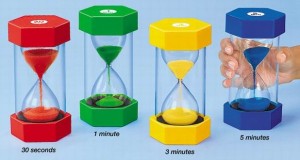— May 24, 2019
If you subscribe to Ansoff’s matrix of growth, then you believe there are four primary ways to achieve growth:
- Sell more of your current solutions to your current customers/markets (Market Penetration)
- Sell new solutions to your current customers/marketing (Product Development)
- Sell current solutions to new customers/market (Market Development)
- Sell new solutions to new customers/markets (Diversification)

There are pros and cons of a land grab strategy.
There are various ways to bring these strategies to life. When we work with customers on their growth strategy, one of the questions that often arises is “can we use a land grab approach?” Anyone who saw the movie “Far and Away” recalls the scene where the characters played by Tom Cruise and Nicole Kidman race horseback across the plains to grab a piece of the land, stake their claim and settle into the new territory. We’ll avoid the politics and history of land grabs, which generally entail one group of people grabbing land being used by another group of people, and just explore the concept as it applies to business.
Like the scene invoked by the movie, the key question you need to answer is whether you’re in a market where you are first with a new technology and there is limited competition or you’re in an established market with many competitors. If you’re in a relatively competitive and new market, a land grab strategy makes sense. Think about when eBay first emerged in 1995. It was among the first online marketplaces, and their founder called it the “AuctionWeb.” Their land grab strategy enabled them to grow 161% in their first 10 years! Today they face significant competition from another well-known company using a land grab strategy, Amazon. Both eBay and Amazon provide insight into how to successfully execute a land grab strategy.

3 Success Factors for a Successful Land Grab Growth Strategy .
Three Success Factors for a Successful Land Grab Growth Strategy
First, this growth strategy is about market and customer share and category ownership, not profit. For both eBay and Amazon, success was not measured by profit but by share. Both companies were willing to sacrifice profit in order to get big fast.
Second, your mission is to pioneer a market. eBay’s mission was quite clear – “pioneer new communities around the world built on commerce, sustained by trust, and inspired by opportunity.” Pioneers transform industries and go against conventional thinking. Being a pioneer means you are willing to take substantial risk, accept mistakes and failure, and make significant investments in R&D and acquisitions. By 2014, eBay had acquired 40 companies! It takes significant capital to be a pioneer.
Third, eBay focused on economies of scale to maintain cost leadership, offering the maximum value at the lowest price. eBay was obsessive about minimizing operating costs and streamlining processes. We often think of tangible products when we refer to operating costs and process management. Even software and services companies have costs associated with people, tools, and infrastructure and processes associated with development, delivery and service.
There are other factors associated with this strategy, but they are not as important as these three. You must be able to leverage ALL three of the above mentioned factors to take advantage of a land grab strategy. If that’s not your situation, or you’re not willing to do ALL three of these, then we’d recommend you consider alternative strategies.
Embrace Growth Strategies Based on Insights

Use insights derived from data to inform your growth strategy.
If you decide the land grab idea is not for you, then you may ask what other approaches might help you achieve growth. We can turn to Michael Porter for two ideas: customer intimacy and differentiation. Customer intimacy requires you to create tailored offerings to meet specific customer needs. At Motorola Semiconductor, we had a business known as Customer Specified Integrated Circuits. While all the microcontrollers were built on the same architecture, we were able to quickly design and deliver new “derivatives” based on specific customer requirements. Customer intimacy is the epitome of customer centricity, and every investment is made in order to build a deep and lasting relationship – think customer lifetime value, share of wallet and customer advocacy.
When you use differentiation and innovation for growth, your goal is to design and develop quality products or services based on customer insights that provide competitive advantages over other products in the market. Differentiation can be reflected in any aspect of the offer, for example, packaging, channel convenience, and ease of use. Lens Crafters provides an excellent illustration of using differentiation to spur growth. When the company launched in 1983, its claim was that you could have your prescription eyeglasses in “about an hour.” Up until then, you might have to wait days or up to a couple of weeks for your new prescription. The ability to have eyeglasses that quickly totally changed the market.
What’s important to note about these alternatives to the land grab is that they both require deep understanding of your customer, the market, and your competition. If you choose one of these, then research becomes a staple within your organization in order to make customer-centric, data-derived decisions.
Business & Finance Articles on Business 2 Community
(53)
Report Post




